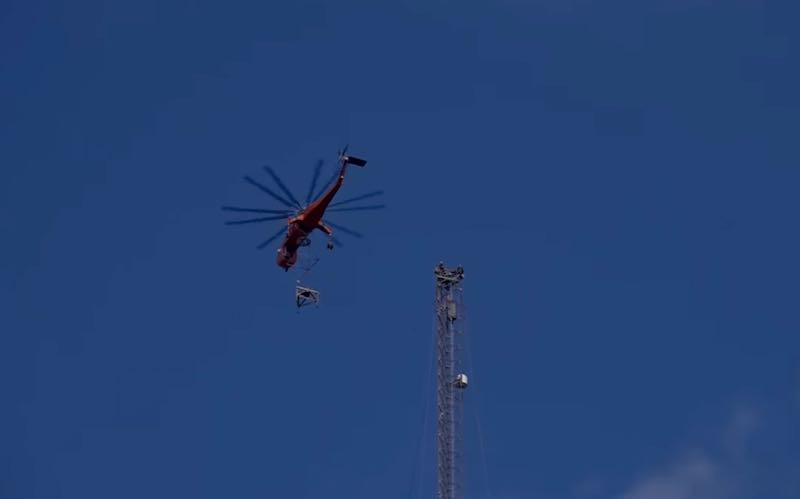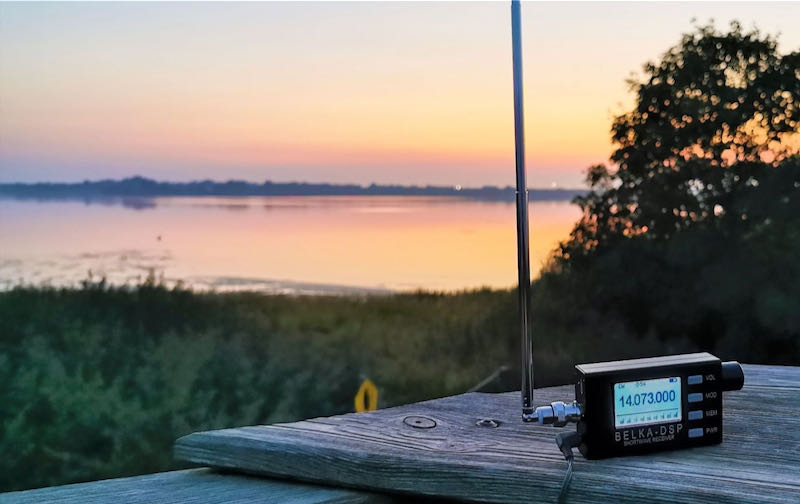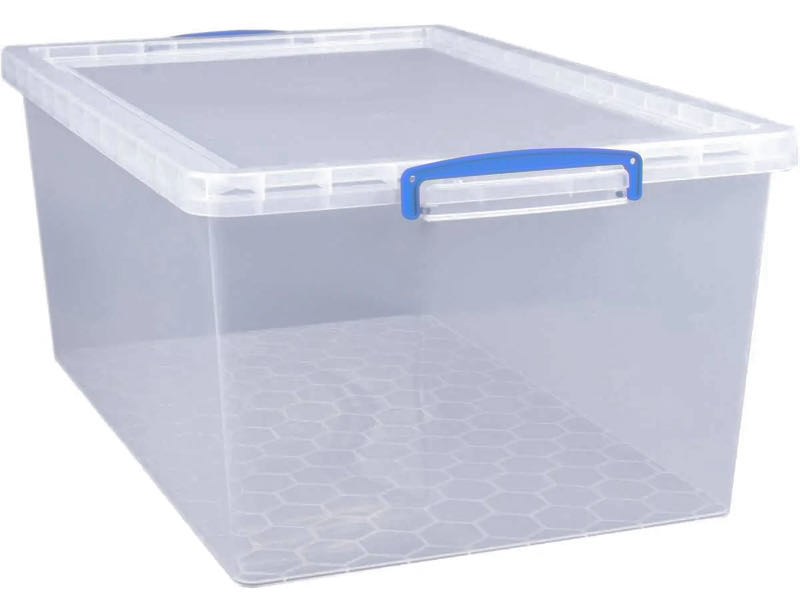 Many thanks to SWLing Post contributor, Jack Dully, who shares the following video of a crew replacing a TV station antenna on top of a 1,500 foot tower.
Many thanks to SWLing Post contributor, Jack Dully, who shares the following video of a crew replacing a TV station antenna on top of a 1,500 foot tower.
Fair warning: if you’re afraid of heights this might make you weak in the knees!

From the Isle of Music, October 3-9
This week present a special tribute to the recently-departed Adalberto Álvarez with recordings from various phases of his career.
1. For Eastern Europe but audible well beyond the target area in most of the Eastern Hemisphere (including parts of East Asia and Oceania) with 100Kw, Sunday 1500-1600 UTC on SpaceLine, 9400 KHz, from Sofia, Bulgaria (1800-1900 MSK)
2. For the Americas and parts of Europe, Tuesday 0000-0100 UTC on WBCQ, 7490 kHz from Monticello, ME, USA (Monday 8-9PM EDT in the US).
3 & 4. For Europe and sometimes beyond, Tuesday 1900-2000 UTC and Saturday 1200-1300 UTC on Channel 292, 6070 kHz from Rohrbach, Germany.
Our Facebook page is https://www.facebook.com/fromtheisleofmusic/
Our V-Kontakte page is https://vk.com/fromtheisleofmusic
Our Patreon page is https://www.patreon.com/tilford
Uncle Bill’s Melting Pot, October 3-9:
In episode 237, we explore the music of Brunei.
The transmissions take place:
1.Sunday 2200-2300 (6:00PM -7:00PM EDT) on WBCQ The Planet 7490 kHz from the US to the Americas and parts of Europe
2. Tuesday 2000-2100 UTC on Channel 292, 6070 kHz from Rohrbach, Germany for Europe.
3. Saturday 0800-0900 UTC on Channel 292, 9670 kHz from Rohrbach, Germany for Europe with a directional booster aimed eastward.
Our Facebook page is https://www.facebook.com/UncleBillsMeltingPot/
Our V-Kontakte page is https://vk.com/fromtheisleofmusic
Our Patreon page is https://www.patreon.com/tilford
Because I keep my ear to the waves, as well as receive many tips from others who do the same, I find myself privy to radio-related stories that might interest SWLing Post readers. To that end: Welcome to the SWLing Post’s Radio Waves, a collection of links to interesting stories making waves in the world of radio. Enjoy!
Many thanks to SWLing Post contributors Troy Riedel, Dan Robinson, and the Southgate ARC for the following tips:
IRVINE, Calif.–(BUSINESS WIRE)–Jul. 26, 2021– Skyworks Solutions, Inc. (Nasdaq: SWKS), an innovator of high-performance analog semiconductors connecting people, places and things, today announced that it has completed its acquisition of the Infrastructure & Automotive business of Silicon Laboratories Inc. (Nasdaq: SLAB) in an all-cash asset transaction valued at $2.75 billion.
“On behalf of the entire Skyworks organization, I want to welcome the Infrastructure & Automotive team,” said Liam K. Griffin, chairman, chief executive officer and president of Skyworks. “In addition to a strong legacy of innovation and execution, the I&A business brings a highly diversified customer base that will enable our continued expansion into strategic end markets. Together, we will accelerate profitable growth in key industry segments, including electric and hybrid vehicles, industrial and motor control, power supply, 5G wireless infrastructure, optical data communications and data center.” Continue reading
Many thanks to SWLing Post contributor, 13dka, who shares the following guest post:
 Revisiting the Belka’s “pseudo-sync detector”: A sync detector crash course!
Revisiting the Belka’s “pseudo-sync detector”: A sync detector crash course!by 13dka
“It’s usually hard to assess whether or not a sync detector helped with a particular dip in the signal or not, unless you have 2 samples of the same radio to record their output simultaneously and compare.”*
That’s what I wrote about the “pseudo sync detector” in my review of the Belka DSP last year.
Since I was recently upgrading to the Belka DX in order to pass on the Belka DSP to a friend, I had briefly two examples of almost the same radio on the table at the dike. I tuned them to the same stations and recorded some audio clips with one radio on sync detector, the other in regular AM mode, to answer the question whether or not sync has “helped with a particular dip in the signal”. Then I thought that demonstration would be an opportunity to try an explanation on what exactly (I think) sync detectors are all about anyway, hoping to find a middle ground between “technical” and “dumbed down beyond recognition”.
Perhaps no component of a shortwave receiver is surrounded by so much misconception and confusion as sync detectors. Full disclosure: Until quite recently, I had an, at best, vague concept on what they do myself. It seems it’s not so much that people don’t know how they work, what they actually do when they work is where the ideas often diverge. Continue reading
 Many thanks to SWLing Post contributor, Paul, who writes:
Many thanks to SWLing Post contributor, Paul, who writes:
This may be a good discussion question on your great blog.
Basically, I am curious to learn where and how do people store their various radios – I think it’s safe to say that many of us have more than 5 or 10. Do you use bookshelves? TV stands? Those storage cube organizers? Custom shelving on the walls? It will be interesting to know …
All the best
Paul
I think this is a great question, Paul.
Personally, I have a lot of portables, so storage is definitely an issue. Since I do radio reviews, many models aren’t ones I use daily but I keep them for comparison reviews and for using in rotation.
The first thing I do when I store a radio is remove its batteries if it takes traditional cells (like AA, AAA, C, or D batteries). I remove them to prevent them from leaking and corroding the battery terminals. Even though I’ve migrated the Eneloop batteries (for AA and AAA), I still remove them for storage.
I built custom shelves into my office to accommodate large standard size clear storage containers; I believe the ones I have originally came from IKEA. I store all of my portables in those containers with a little padding or their original box to keep them from getting scratched up.
This system has worked for me very well over the years, but I’ll admit that I wish my small office had more shelf area for radios on display!
Readers: How do you store your radios when not in use? Please comment!
Many thanks to SWLing Post contributor, Robert, who writes:
Thomas – Check out this NOS Barlow Wadley XCR-30 on eBay. I have never seen one of these in this condition!!
Offered is a MINT condition, brand new Barlow-Wadley XCR-30 Mark 2 receiver manufactured in 1974. This particular unit is in the original box, has never been used and is in pristine shape. It’s just like someone would have received it when buying it new nearly 50 years ago. Until a few months ago, it was still sealed in the original plastic and my initial intention was to leave it like that. However, the tape on the plastic had become brittle with age and no longer was adhering to the plastic. I therefore decided to remove the receiver long enough to get a series of photos and carefully placed it back in the plastic. All original accessories and documentation are included: one bag with the operating instructions, original warranty (guarantee) card, and extra log cards; another bag with the the plugs for the user to make the following items: grey plug (earphone), red banana plug (external antenna), black banana plug (grounding/earth), and grey plug (external power supply).
If you are searching specifically for an XCR-30, it’s most likely you know that this receiver was considered state-of-the-art and rather famous when first manufactured. The receiver uses what is known as a Wadley loop which is a clever method of obtaining frequency stability. There are various articles online which go in to greater detail regarding this receiver as well as the theory and significance of the Wadley loop. This receiver has a frequency range of 500 kHz to 30 MHz and which is covered in 30 separate bands of 1 MHz each.
Due to the age of this receiver it is being sold as-is with no guarantee of its operability in the future. Also, it is very much recommended that it be properly serviced prior to any attempt at powering up. At a minimum, all electrolytic capacitors should be replaced.
This receiver will be well packaged with extra layers of cardboard and packing peanuts around all sides, top and bottom for protection during shipping.
On Sep-20-21 at 18:39:31 PDT, seller added the following information:
Please note: I have NOT installed any batteries into the receiver. That’s what “never used” means in the title and description.
Wow! What a find, Robert. Thank you for sharing it with us. I bet this listing will go much higher in price–it’s rare to see a mint NOS Barlow Wadley XCR-30 on eBay. I would love an XCR-30 some day, but this will surely go beyond my bidding comfort level! Indeed, I’m very curious how high it will go!